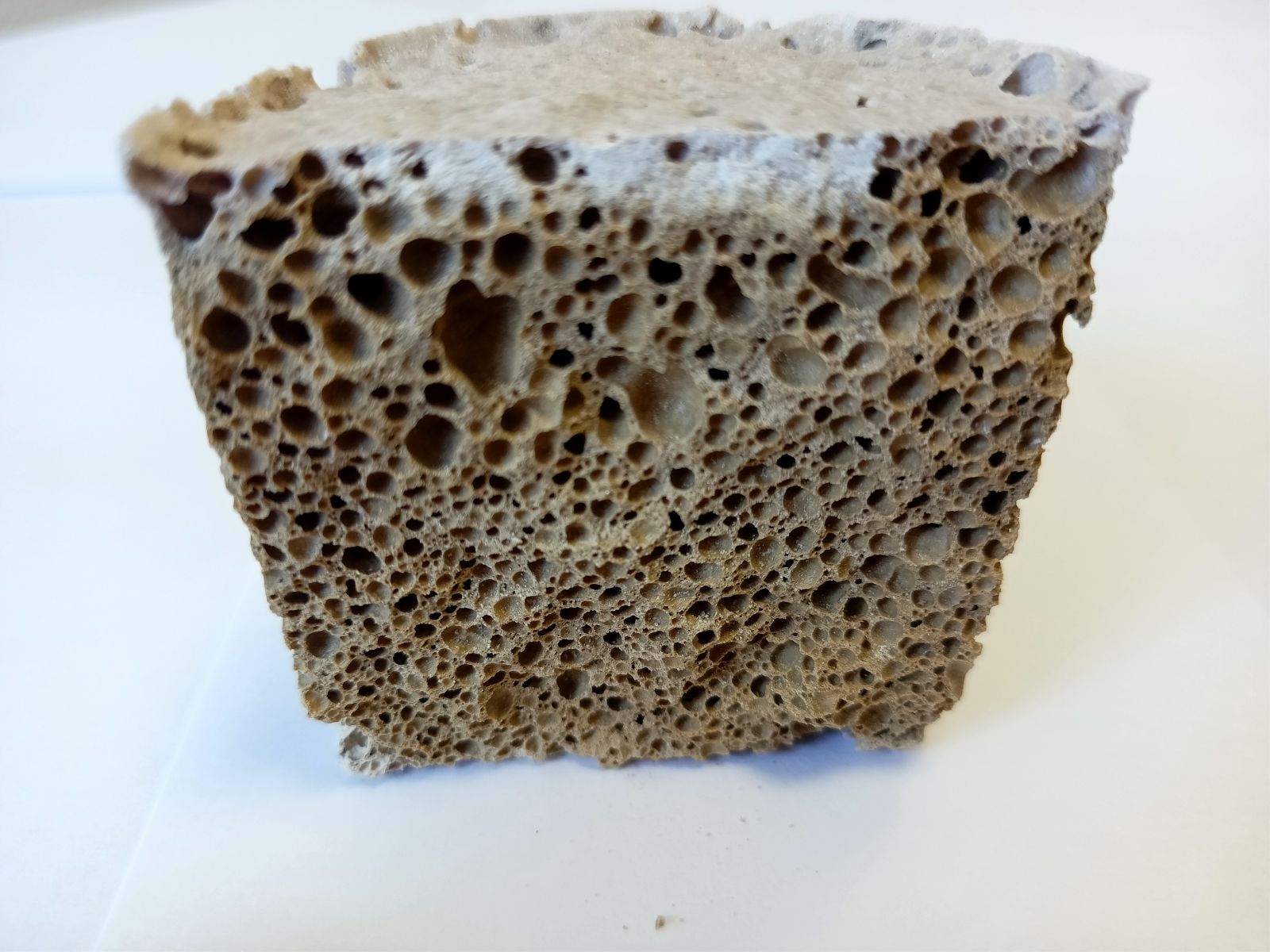A aerated concrete has been developed in CTCON's laboratories. This innovative concrete is composed of highly available local waste and recycled aluminium foaming agents.
There is a growing trend towards the use of cellular or aerated concretes due to their benefits such as weight reduction in structures, reduced thermal conductivity and improved fire resistance. These materials also provide good acoustic insulation, strength and durability.
Cellular concrete is a porous, lightweight material with thermal insulation properties. It is manufactured using a mixture of aggregates, cement, lime and water. An expansive agent (aluminium) is added to this mixture, which generates hydrogen, and when it expands, it forms micropores inside the concrete, resulting in cellular concrete.
This type of concrete is usually cured in an autoclave for a period of several hours applying high temperatures and pressure. This achieves good mechanical strength.
Due to the quantities of cement and lime used, this type of concrete often has a high environmental impact. In order to significantly reduce this problem, CTCON researchers have succeeded, within the framework of the GEOCEL project, to manufacture this lightweight, insulating concrete, using an 80% of materials from local waste, replacing 100% of cement and lime. This has resulted in a process that generates approximately 75% less emissions pollutants compared to traditional cellular concretes.
This breakthrough is not only relevant for its impact on the construction of lighter and better thermally insulated structures, but also for the message we want to send to the construction sector and to society in general. It shows that innovation and environmental awareness can go hand in hand, creating solutions that benefit both industry and the planet.

